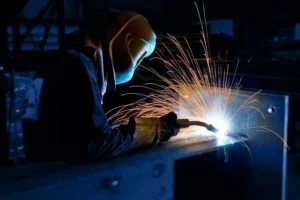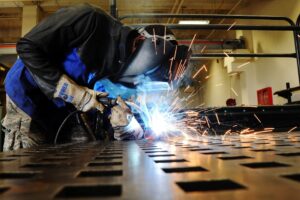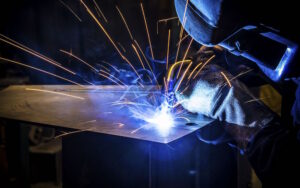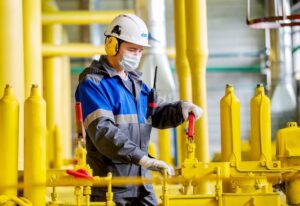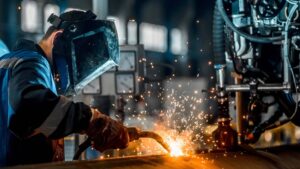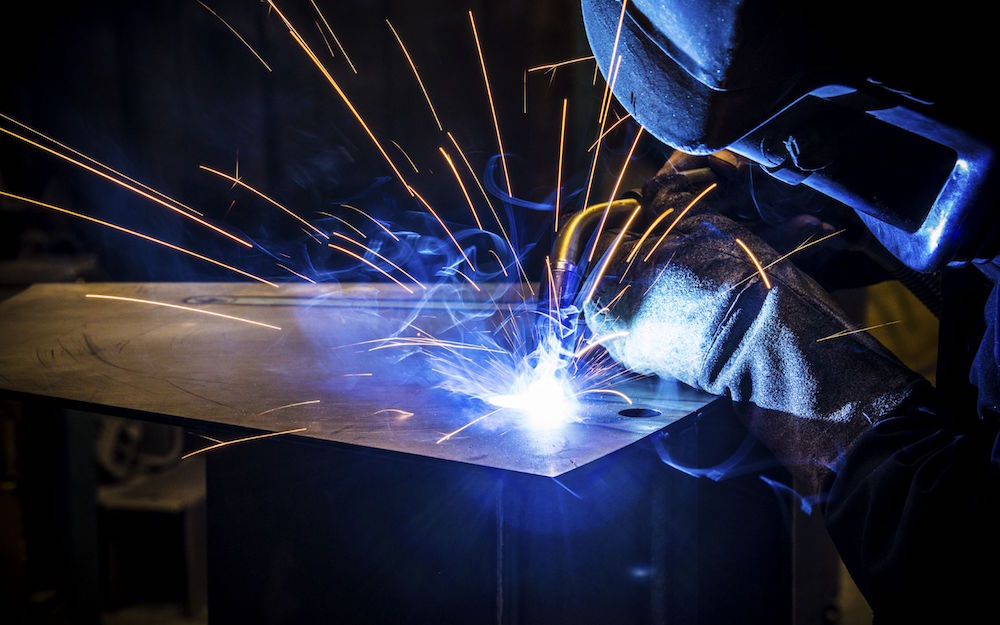
In metal fabrication, stainless steel holds a prestigious position for its exceptional strength, durability, and resistance to corrosion. Its versatility makes it a top choice for various applications across industries, from automotive and aerospace to construction and food processing. However, welding stainless steel requires distinct techniques and considerations compared to other metals. This comprehensive guide delves into the nuances of stainless steel welding, exploring its challenges and best practices. Moreover, we will see the tools necessary to achieve flawless welds.
Stainless Steel Welding: The Material and Its Properties
Before delving into the intricacies of welding stainless steel, it’s crucial to comprehend the material itself. Stainless steel is an alloy primarily composed of iron, with chromium being the key element responsible for its corrosion resistance properties. Depending on the specific grade, stainless steel may also contain other elements such as nickel, molybdenum, and titanium.Here each contributes to its unique characteristics.
One of the defining features of stainless steel is its low thermal conductivity, which poses challenges during welding. Unlike carbon steel, stainless steel retains heat more efficiently, leading to issues like distortion and warping if not properly managed. Additionally, stainless steel tends to form chromium carbides at high temperatures. It can compromise its corrosion resistance if not mitigated through proper welding techniques.
Techniques and Considerations in Stainless Steel Welding Process
Achieving high-quality welds on stainless steel requires a thorough understanding of the welding process and careful attention to various factors. Here are some essential techniques and considerations:
Selecting the Right Filler Metal: Choosing the appropriate filler metal is critical for ensuring strong and durable welds. Common options include austenitic stainless steel filler metals such as 308L and 316L. These offer excellent corrosion resistance and compatibility with most stainless steel grades.
Managing Heat Input: Due to stainless steel’s low thermal conductivity, controlling heat input is paramount to prevent distortion and overheating. Techniques such as pulsed welding and maintaining a low interpass temperature can help mitigate these issues.
Shielding Gas Selection: Utilizing the correct shielding gas is essential for preventing oxidation and ensuring clean welds. Typically, a gas mixture containing argon and CO2 or helium is used for stainless steel welding. Hence, providing adequate protection while minimizing the risk of contamination.
Preventing Contamination: Contamination from dirt, oil, or previous welds can compromise the integrity of stainless steel welds. Thorough cleaning and storing of materials are crucial to avoid contamination and to maintain weld quality.
Joint Preparation and Fit-up: Proper joint preparation and fit-up are vital for achieving strong and reliable welds. Beveling or chamfering the edges of the base metal and ensuring proper alignment of the workpieces can help facilitate the welding process and improve weld penetration.
Equipment for Steel Welding
To excel in steel welding, having the right equipment is essential. Here are some indispensable tools for the job:
TIG Welder: Tungsten Inert Gas (TIG) welding is the preferred method for welding stainless steel due to its precise control and ability to produce high-quality welds. Investing in a quality TIG welder with adjustable pulse frequency and amperage settings is essential for achieving optimal results.
Welding Consumables: High-quality filler metals, shielding gases, and welding electrodes specifically designed for steel welding are indispensable for ensuring clean and durable welds.
Personal Protective Equipment (PPE): Welding stainless steel generates intense heat and harmful fumes, necessitating the use of appropriate PPE. These include welding helmets, gloves, and protective clothing, to ensure the safety of the welder.
Welding Positioners and Fixtures: Positioners and fixtures can greatly improve efficiency and accuracy during steel welding. This is done by allowing for precise positioning and manipulation of workpieces.
Conclusion
In conclusion, mastering the art of stainless steel welding requires expertise, careful attention to detail, and the right tools for the job. By understanding the unique properties of stainless steel and employing appropriate techniques and equipment, welders can consistently achieve flawless welds that meet the highest quality and durability standards. Whether in industrial fabrication or intricate artistic endeavors, steel welding remains a cornerstone of modern metalworking, offering unparalleled strength and longevity for various applications. For more information on stainless or its welding, contact us now.

